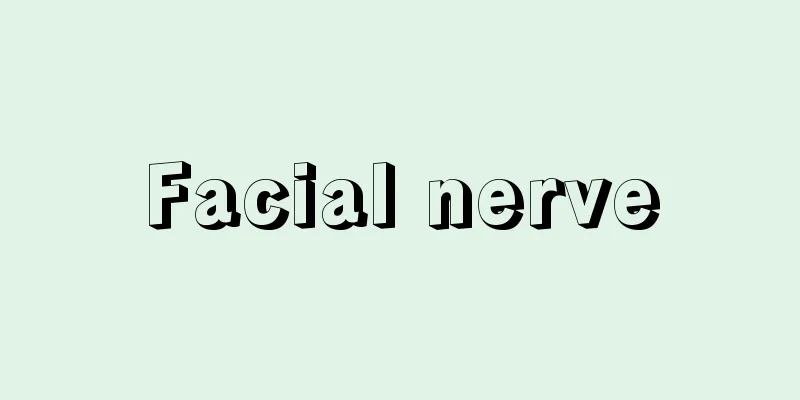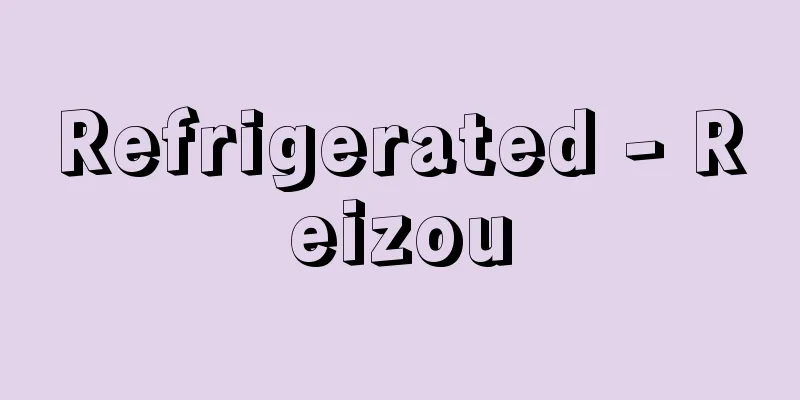Facial nerve

|
This nerve is mainly composed of motor fibers that move the facial muscles, platysma, buccal, and stapedius muscles, but is also called the 7th cranial nerve because it is the 7th from the front of the 12 pairs of cranial nerves that enter and exit the base of the brain. The nerve cells that are the source of the motor fibers of the facial nerve are cells of the facial nucleus, which is located inside the brain stem at the border between the pons and the medulla oblongata. The facial nerve exits the brain from the outer part of the groove at the border between the medulla oblongata and the pons, passes through the facial canal in the temporal bone, and then passes through the styloid foramen below the external auditory canal, and then branches into several branches inside the parotid tissue mass to distribute to the facial muscles, etc. The facial nerve includes the nervus intermedius along its course, which exits the brain halfway between the facial nerve and the vestibulocochlear nerve (cranial nerve 8). The intermedius nerve is composed of nerve fibers that control taste from the anterior two-thirds of the tongue, nerve fibers that are distributed to the submandibular and sublingual glands and control saliva secretion, and nerve fibers that control secretions from the lacrimal glands and mucous glands in the nasal cavity and mouth. Facial paralysis often occurs due to damage to the facial nerve. If only the motor nerve fibers are damaged, only the facial muscles on the same side as the damage will be paralyzed, but depending on the location of the damage, other symptoms such as impaired salivary gland secretion, loss of taste, and hyperacusis may appear. [Kazuyo Shimai] [Reference] | |Source: Shogakukan Encyclopedia Nipponica About Encyclopedia Nipponica Information | Legend |
|
顔面の表情筋、広頸(こうけい)筋、頬(きょう)筋およびアブミ骨筋を動かす運動神経線維が主体となった神経をいうが、脳の底部から出入する12対の脳神経のうち、前方から第7番目にあたるため、第7脳神経ともよぶ。顔面神経の運動神経線維の源となる神経細胞は、橋(きょう)と延髄の境の脳幹内部に存在する顔面神経核の細胞である。顔面神経は、延髄と橋の境の溝の外側部位から脳の外に出て、いったん側頭骨内の顔面神経管を通り抜け、さらに外耳孔の下方にある茎状突起孔を経て、耳下腺(せん)組織塊の内部で数本の枝に分かれて表情筋等に分布する。顔面神経は走行途中で中間神経を含むが、この中間神経は顔面神経と内耳神経(第8脳神経)の中間から脳の外へ出る。 中間神経は、舌の前方3分の2の範囲からの味覚をつかさどる神経線維、顎下腺(がくかせん)・舌下腺に分布して唾液(だえき)分泌を支配する神経線維、および涙腺や鼻腔(びくう)・口腔の粘液腺の分泌を支配する神経線維から構成されている。 顔面神経麻痺(まひ)は顔面神経の障害によってしばしばおこる。運動神経線維だけに障害がおこれば、障害と同側の表情筋にのみ麻痺を生じるが、障害の場所によっては、その他の唾液腺の分泌障害、味覚脱失、聴覚過敏などの症状が現れてくる。 [嶋井和世] [参照項目] | |出典 小学館 日本大百科全書(ニッポニカ)日本大百科全書(ニッポニカ)について 情報 | 凡例 |
Recommend
Togetosaka (spiny comb) - Togetosaka
A general term for coelenterates (cnidarians) belo...
Straits tin (Straits tin)
A general term for tin produced in the Malay Penin...
treasure-hunt
...A game in which a group of rabbits are followe...
Billetdoux, F. (English spelling) BilletdouxF
...The Renaud-Barraud Theatre Company, which he f...
Sannomiya
A shopping street located to the south of JR Sann...
Andronicus, L. (English spelling) AndronicusL
...In the following, we will look back historical...
Small leaf-rolling moth - Small leaf-rolling moth
A general term for insects of the Olethreutinae su...
Indecent assault - indecent assault
The crime of committing obscene acts against men a...
Matos, G.de (English spelling) MatosGde
...These works, which took as their background or...
solid-state detector
...In addition, a television camera using a speci...
One flower - Ipponbana
〘Noun〙① A flower that is offered at the bedside of...
Kamakura Highway - Kamakura Oukan
...The journey between Edo and Kofu took about tw...
Nakahara [town] - Nakabaru
A former town in Miyaki County, eastern Saga Prefe...
Oats - Oat
…an annual or biennial plant of the grass family ...
Enryaku Ritual Book
It is also called "Ise Taijingu Rites," ...









